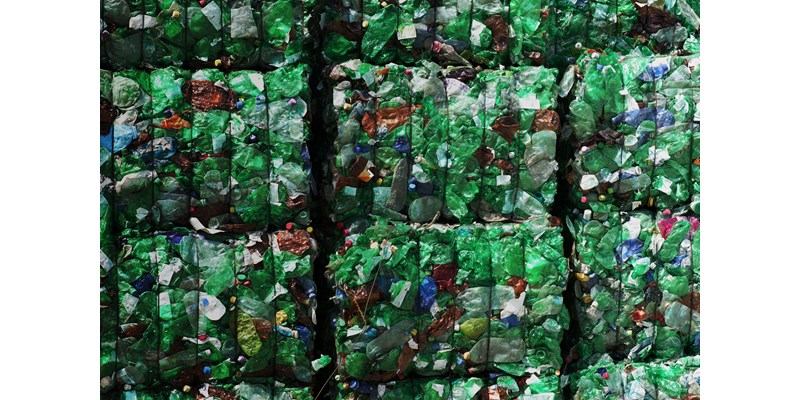1 minute read
Six misconceptions of plastic
To fully appreciate the impact of plastics, we need to understand its value as well as its problems. Here we tackle six common misonceptions of plastic.
We'll be exploring this topic in more depth at the 2018 Living With Plastic conference. Join us there or get your copy of the presentation slides when you fill in the form on this page.
Six misconceptions of plastics
1. All plastic bottles end up either in the ocean or in landfill
An empty bottle can have another life in a new product, and the collection, sorting and processing of PET plastic bottles is a substantial global industry. Recycled plastic can be used in a variety of new ways to make fibres that become clothing, and, if upgraded, can be used again to package food and store drinks. In 2017, 56% of plastic PET bottles already used by consumers were collected globally. The highest collection rates were in the Asia Pacific region, while Western Europe had an overall collection rate of 62%.
2. Plastic is only used in packaging
Plastic has a myriad of uses and is versatile and adaptable. For example, plastics have a vital part to play in the automotive industry. Its light weight has helped vehicles to improve fuel efficiency and meet industry regulations. In terms of volume, modern cars are composed of around 50% plastics, but equates to approximately 15% of the weight.
Plastics also have numerous uses in the modern medical industry, from the simple disposable syringe to more advanced uses, such as providing the core component for a prosthetic limb or the casing of an MRI machine.
3. We should package food in materials other than plastic
Using flexible plastics to package food can extend shelf life through the distribution chain and reduce food waste, while the light weight also has advantages in reducing the overall carbon footprint of the supply chain compared to packaging in, say, glass
4. Manufacturing plastic is a waste of natural resources
The weight of plastic bottles has reduced significantly over the last few decades. Using lighter bottles means fewer raw materials are needed in production, which means that plastic packaging is more energy and resource efficient in comparison to heavier alternatives such as glass. In Europe, plastics make up half of all packaging yet account for less than 20% of packing materials by weight.
5. Europe exports its plastic problem
West Europe reprocesses and reuses the vast majority of the PET it collects. In 2017, West Europe exported less than 10% of the PET that was collected, while the rest was reprocessed and reused locally. Compared to 2010, West Europe now exports 5% less of the PET collected. Looked at another way, West Europe now retains and reuses 50% more PET than it did in 2010.
6. We should focus our recycling efforts on plastic bottles
Did you know that a large majority of clothing and fabric goes to landfill and is not recycled? Polyester for clothing and fabrics accounted for 55% of all fibres used globally in 2017. Currently, there are no meaningful alternatives to polyester in the face of growing demand for clothing and textiles driven by global improvements in living standards. If we aren’t talking about ways to make sure our discarded clothing has a second life, we should be.
-
62%
Overall PET bottle collection rate in Western Europe
-
50%
Modern cars are composed of around 50% plastics
-
50%
Increase in PET recycling in Western Europe since 2010
-
55%
In 2017, polyester for clothing and fabrics accounted for 55% of all fibres used globally
Living with Plastic Packaging Conference 2018
Are we losing sight of the value of plastics? At this year's living with Plastic Packaging Conference, Helen Mcgeough, Senior Consultant for RPET at Wood Mackenzie Chemicals, will discuss the challenge of re-educating consumers about the value of plastic and the benefits of a bottle deposit return scheme. Fill in the form to get a copy of her presentation slides.
Are there viable alternatives to plastic packaging?
Plastics are incredibly efficient and cost-effective. Its versatility and light weight mean it can be used in a variety of ways for everyday products. In the face of a growing backlash against its use, it becomes easy to forget the value of plastic. As much as we love to hate it, until we find viable alternatives, the market for plastic is only expected to grow.
While there are clearly good intentions behind bans on single-use plastics, and improper disposal does need to be addressed, coming up with viable alternatives is complex, time consuming and presents numerous challenges, there are no easy fix replacements
For example, if we look at the complete value chain, paper, often suggested as a replacement for plastic, has a greater carbon impact. Materials such as glass cost more to ship and produce and have a higher end-use environmental impact. Who will pay the bill for the costlier alternatives?
At the 2018 Living with Plastic Packaging conference, we asked, how we can carry on "Living with Plastic Packaging"? Get your copy of the presentation slides to learn what alternatives exist and the opportunities we have to reach a sustainable future. Fill in the form on this page.






